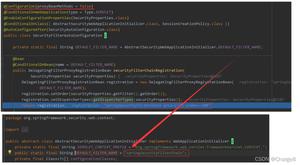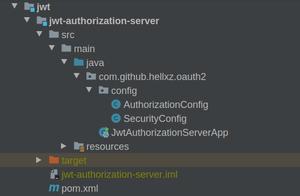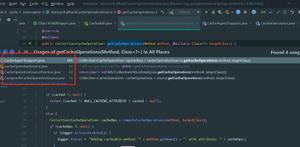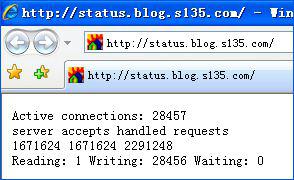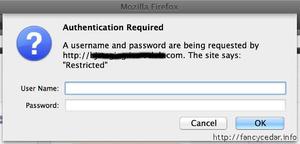如何禁用特定URL的Spring Security
我正在使用无状态Spring Security,但是如果要注册,我想禁用Spring Security。我禁用了
antMatchers("/api/v1/signup").permitAll().但它不起作用,我在下面收到错误消息:
message=An Authentication object was not found in the SecurityContext, type=org.springframework.security.authentication.AuthenticationCredentialsNotFoundException我认为这意味着弹簧安全过滤器正在工作
我的网址顺序始终为“ / api / v1”
我的spring配置是
@Override protected void configure(HttpSecurity http) throws Exception {
http.
csrf().disable().
sessionManagement().sessionCreationPolicy(SessionCreationPolicy.STATELESS).
and().
authorizeRequests().
antMatchers("/api/v1/signup").permitAll().
anyRequest().authenticated().
and().
anonymous().disable();
http.addFilterBefore(new AuthenticationFilter(authenticationManager()), BasicAuthenticationFilter.class);
}
我的身份验证过滤器是
@Override public void doFilter(ServletRequest request, ServletResponse response, FilterChain chain) throws IOException, ServletException {
HttpServletRequest httpRequest = asHttp(request);
HttpServletResponse httpResponse = asHttp(response);
String username = httpRequest.getHeader("X-Auth-Username");
String password = httpRequest.getHeader("X-Auth-Password");
String token = httpRequest.getHeader("X-Auth-Token");
String resourcePath = new UrlPathHelper().getPathWithinApplication(httpRequest);
try {
if (postToAuthenticate(httpRequest, resourcePath)) {
processUsernamePasswordAuthentication(httpResponse, username, password);
return;
}
if(token != null){
processTokenAuthentication(token);
}
chain.doFilter(request, response);
} catch (InternalAuthenticationServiceException internalAuthenticationServiceException) {
SecurityContextHolder.clearContext();
logger.error("Internal authentication service exception", internalAuthenticationServiceException);
httpResponse.sendError(HttpServletResponse.SC_INTERNAL_SERVER_ERROR);
} catch (AuthenticationException authenticationException) {
SecurityContextHolder.clearContext();
httpResponse.sendError(HttpServletResponse.SC_UNAUTHORIZED, authenticationException.getMessage());
} finally {
}
}
private HttpServletRequest asHttp(ServletRequest request) {
return (HttpServletRequest) request;
}
private HttpServletResponse asHttp(ServletResponse response) {
return (HttpServletResponse) response;
}
private boolean postToAuthenticate(HttpServletRequest httpRequest, String resourcePath) {
return Constant.AUTHENTICATE_URL.equalsIgnoreCase(resourcePath) && httpRequest.getMethod().equals("POST");
}
private void processUsernamePasswordAuthentication(HttpServletResponse httpResponse,String username, String password) throws IOException {
Authentication resultOfAuthentication = tryToAuthenticateWithUsernameAndPassword(username, password);
SecurityContextHolder.getContext().setAuthentication(resultOfAuthentication);
httpResponse.setStatus(HttpServletResponse.SC_OK);
httpResponse.addHeader("Content-Type", "application/json");
httpResponse.addHeader("X-Auth-Token", resultOfAuthentication.getDetails().toString());
}
private Authentication tryToAuthenticateWithUsernameAndPassword(String username,String password) {
UsernamePasswordAuthenticationToken requestAuthentication = new UsernamePasswordAuthenticationToken(username, password);
return tryToAuthenticate(requestAuthentication);
}
private void processTokenAuthentication(String token) {
Authentication resultOfAuthentication = tryToAuthenticateWithToken(token);
SecurityContextHolder.getContext().setAuthentication(resultOfAuthentication);
}
private Authentication tryToAuthenticateWithToken(String token) {
PreAuthenticatedAuthenticationToken requestAuthentication = new PreAuthenticatedAuthenticationToken(token, null);
return tryToAuthenticate(requestAuthentication);
}
private Authentication tryToAuthenticate(Authentication requestAuthentication) {
Authentication responseAuthentication = authenticationManager.authenticate(requestAuthentication);
if (responseAuthentication == null || !responseAuthentication.isAuthenticated()) {
throw new InternalAuthenticationServiceException("Unable to authenticate Domain User for provided credentials");
}
logger.debug("User successfully authenticated");
return responseAuthentication;
}
我的控制器是
@RestControllerpublic class UserController {
@Autowired
UserService userService;
/**
* to pass user info to service
*/
@RequestMapping(value = "api/v1/signup",method = RequestMethod.POST)
public String saveUser(@RequestBody User user) {
userService.saveUser(user);
return "User registerted successfully";
}
}
我怎么做?
回答:
使用permitAll它意味着每个经过身份验证的用户,但是你禁用了匿名访问,因此将无法使用。
你想要的是忽略某些URL,从而覆盖configure采用WebSecurity对象和ignore模式的方法。
@Overridepublic void configure(WebSecurity web) throws Exception {
web.ignoring().antMatchers("/api/v1/signup");
}
然后从HttpSecurity零件中删除该线。这将告诉Spring Security忽略该URL,并且不对其应用任何过滤器。
以上是 如何禁用特定URL的Spring Security 的全部内容, 来源链接: utcz.com/qa/429514.html


